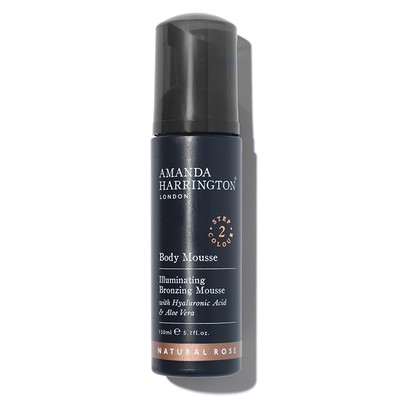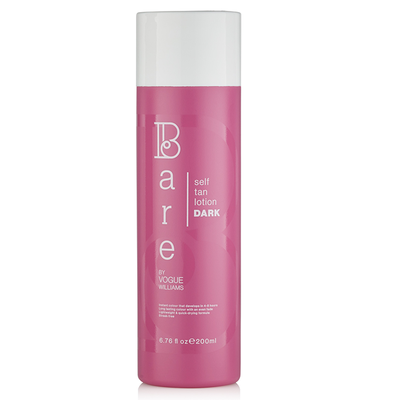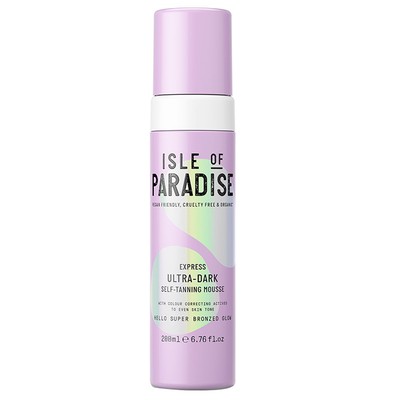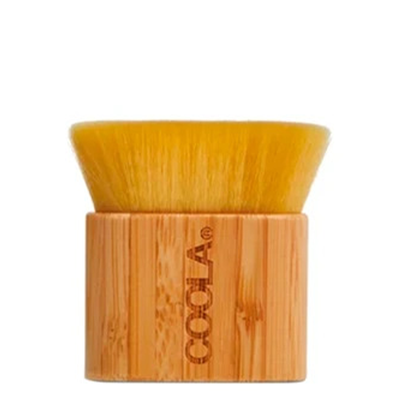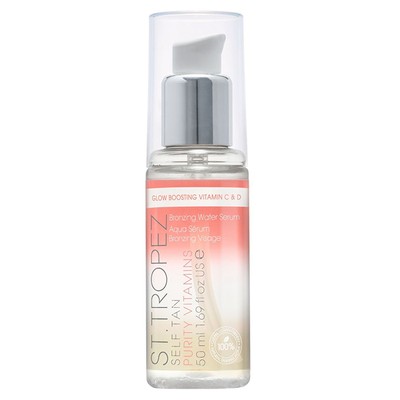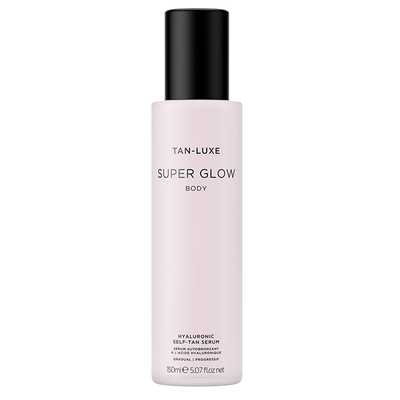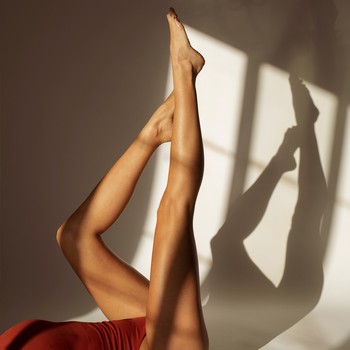
Your Foolproof Guide To DIY Tanning
All products on this page have been selected by our editorial team, however we may make commission on some products.
Invest In The Right Tools
“For accurate application, a foam tanning mitt is still by far the best when it comes to applying your tan at home,” says A-list tanner James Harknett. “A great tip is to disperse either your mousse, liquid or lotion in long sweeping motions over the body. This helps you get a more balanced and natural finish towards the wrists and ankles, as the tan is thinned out by that point. Another great tool is a make-up brush, which you can use to apply tan in those delicate areas. We all know self-tanners love to grab on and turn darker around the knees, elbows and feet, so the light touch of a brush is ideal." Make-up artist & A-list tanner, Amanda Harrington, agrees: "Don't be afraid to use a brush. You probably apply the rest of your make-up with one so it's no different. It will allow you to drive your product into the nooks and crannies of your skin (especially your face), leaving you with fewer tell-tale tanning streaks around areas like your chin or nose."
Always Apply Two Coats
“With all tans, apply two coats to the body and one to face,” says Jules von Hep, professional tanner and creator of Isle of Paradise. “Starting at the ankles and working your way up means that your tan will be dry enough to apply a second coat after a couple of minutes – just start again from the ankles up for the second layer. Then, use what’s left on the mitt to apply tan to your hands and feet; and remember to wipe in between your fingers and over your fingernails with a damp cloth or make-up wipe afterwards. Lastly (my favourite trick of all) – hang a towel on the back of your door and rub your wrists onto it. This helps remove those pesky tell-tale tan lines. As a rule, whatever you do on the body, halve the amount you then apply to your face: for instance, two layers on the body equals one layer on the face.”
Exfoliate First
“Prep is vital, and this includes exfoliation,” explains James. “Once any hair removal has been well timed, exfoliate all over the body on the morning or night before application. REN’s Guerande Salt Exfoliating Body Balm is brilliant at shifting dead skin cells and providing a smooth, even base that’s ready for colour.”
Pay Attention To Your Back
“Many of us still struggle with self-tanning our backs,” says James. “If you can’t snag a spray tan right now, or you live alone, there is a certain method you can try. Turn your tanning mitt the other way around on your hand. Standing sideways, looking into a mirror, you can manoeuvre your arm in circular motions across the shoulders and backs.” Jules adds: “Another technique is to tape a self-tan mitt to a wooden spoon – you’ll be able to reach much further around the body too.”
Pick Your Moment
“Always try and apply your tan after you shower, ensuring skin is dry, make-up free and all deodorant is also washed off,” advises Jules. “Post-shower, our skin’s cells are more hydrated and will therefore absorb tan more evenly for a longer-lasting colour. Do it in front of a mirror, too, in a well-lit area for seamless coverage. It’s also key to avoid using any oils prior to tanning, so avoid massaging or moisturising your skin too heavily the day before – it can act as a barrier, unless it’s mixed with tanning drops.”
Skip Shaving Pre-Tan
“One of the main mistakes people make when tanning is removing hair right before,” says James. “While it will make you nice and smooth, it strips the skin of dead skin cells. These are what tanning agents need to cling to in order to turn the skin brown. Tanning on top of waxed skin will be uneven, look patchy and indeed fake, so make sure any de-fuzzing is done at least two days before. Shaving can be done 24-hours prior, but try to do it two days before if you can, too.”
Think About The Results
“It may sound obvious but, before you self-tan, think about why you want to,” says Jules. “Is it to feel better? To achieve an undetectable glow? To look like you’ve been away? It will help you to decide what formula to go for. If you don’t want orange skin, don’t use a cheap tan or one that doesn’t include clean ingredients. Be careful of the ‘non-vegan’ tan and those containing parabens and minerals oils, too – they can really affect the end colour.”
Don’t Forget Your Knees
“A part of the body that often gets missed is the kneecaps,” says James. “As we sit, the skin around the kneecap opens and expands. The natural lines in the skin allow for it to stretch as we manoeuvre. So, as you’re applying your tan to the legs, prop up your knee to the edge of the bath and work a small amount of product in a circular motion to ensure there are no white circles.”
Prevent Streaks
“If you’re using a tan with a guide colour (one where you can see the colour appear on application), apply it to the body first and check for brown lines,” explains Jules. “Any brown lines mean you’ve overlapped the layers of tan, which in turn, means no streak. Any paler lines on the skin will mean a streak and therefore will need an extra sweep of the tan on top. If you’re using a clear tan, spray it liberally until the skin is visibly wet. The skin should gleam all over with no matte finish at all on the skin – if you spot any matte patches, spray on more formula in that area. Rub in with your palms until your skin feels almost touch dry and don’t forget to wash your hands after. Once you’ve finished, buff off any excess.”
Use The Sunbathing Technique
“The best way to think of where to apply – and where not to – is think about where the sun would hit your skin if you were sunbathing,” says Jules. “You would probably tan everywhere, except for your palms, soles, wrists and hairline. Common areas that people miss include the middle of the back, inner thighs, outer arms, armpits and under the breast – so keep these in mind.”
Know Everybody Can Use It
“A lot of people say, they’re a woman of colour – so why would they need self-tan? In my view, that question is irrelevant,” says Jules. “We can all harness the benefits of self-tan – whether it’s adding glow to paler skin tones, or removing an ashy undertone in darker ones. If you’ve never tanned before and want a natural look, pick your tan shade like you would your make-up. If this sounds confusing, try the Isle of Paradise Green Drops of Green Water: spray it lightly onto the skin at first, and get used to how your skin reacts to the tan. If you want to go darker next time, just apply more.”
Keep The Glow Going
“Whether it’s a spray tan or a DIY tan, it’s best to only top up once,” says James. “Otherwise, you risk overdoing it. Keep the tan moisturised daily – Aesop’s Rind Body Balm is a gamechanger – and ensure skin stays out of hot water to ensure the tan lives longer and stays even. If you’re exercising, or it’s hot, protect the tan with a dusting of medicated talc. A sprinkle around and between the breasts will absorb any excess moisture and sweat that can tear the tan away from the body.”
Finally, Find The Right Formula
“There are so many different formulas on the market now, it pays to use the right one for the results you want,” finishes Amanda. “Sunless tanning products for the face are often developed with added skincare ingredients, so it’s best to stick to dedicated face formulas and dedicated body formulas for their specific areas. So many products – including our Illuminating Face Mist – include ingredients like hyaluronic acid and collagen. These moisturise and offer firming benefits that you’d miss out on if you used your body tan on your face. Likewise, don’t use products dubbed ‘body make-up’ as self-tan – these formulas are created to conceal and hide uneven tone, but they will transfer and wash off fast, unlike fake tan formulas that are built to last.”
Our Favourite Self-Tan Buys…
INSPIRATION CREDITS: Instagram.com/amandaharringtonofficial
DISCLAIMER: We endeavour to always credit the correct original source of every image we use. If you think a credit may be incorrect, please contact us at info@sheerluxe.com.
